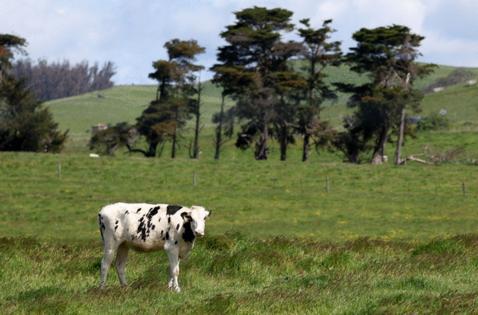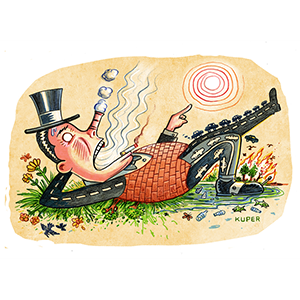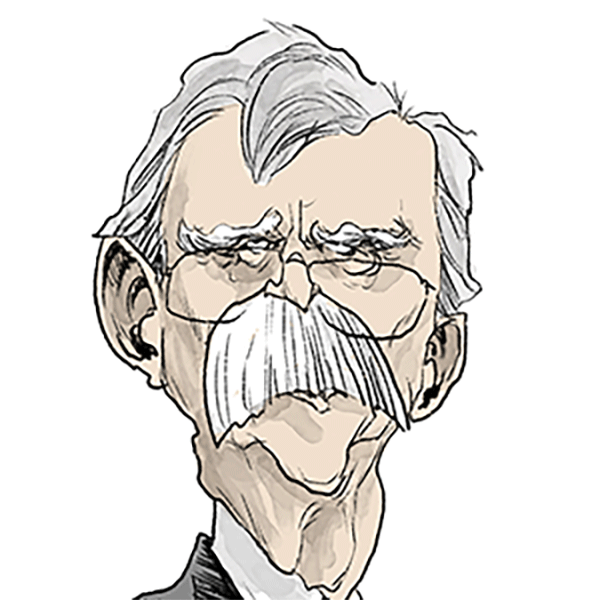Federal and local authorities call for expanded bird flu testing in wake of farm worker infections
Published in News & Features
Federal and local authorities are calling for expanded testing for the presence of H5N1 bird flu amid growing evidence of infections of dairy farm workers.
Observed in poultry in multiple states, the virus was first diagnosed in U.S. dairy cows at the end of March. Days later, the Centers for Disease Control and Prevention reported the first human case linked to an outbreak in dairy cows.
Confirmed human cases now number 46, according to the CDC.
After issuing a report on human H5N1 infections this month, the CDC is calling for expanded testing and improved health protections for farm workers. At the same time, the Pennsylvania Department of Agriculture is ramping up plans to require statewide testing of milk to verify that Pennsylvania's herds are disease-free. (Milk consumers run effectively no risk if they drink pasteurized milk, as the pasteurization process kills dangerous pathogens, according to the U.S. Food and Drug Administration.)
To date, the virus has not been detected in Pennsylvania's dairy cows or farm workers.
On Nov. 7, the CDC issued a report showing evidence that H5N1 may have spread more widely among humans than previously thought. In a study of 115 workers on dairy farms in Michigan and Colorado whose blood was drawn from June to August, eight workers, or 7%, tested positive for antibodies against the H5N1 subtype of the highly pathogenic avian influenza.
Half of these workers did not recall feeling sick. The other half suffered mild symptoms, such as conjunctivitis. They had all reported milking cows or cleaning the milking parlor, indicating that these are higher-risk activities. None wore respiratory protection, and fewer than half wore eye protection.
These findings led to the CDC's updated recommendations for farm workers.
"What we are announcing today is an intensification of recommendations to focus on the highest-exposure tasks in poultry and dairy operations, ultimately to reduce the risk of infection," said Dr. Nirav Shah, CDC principal deputy director, according to a transcript of a Nov. 7 news briefing.
Workers who are exposed to infection during poultry culling or during the milking of infected cows should be tested regardless of whether they have symptoms, the guidelines advise. The CDC also now recommends offering the antiviral Tamiflu even to asymptomatic workers who have had a high-risk exposure without adequate protective gear. Finally, the agency has updated its recommendations for personal protective equipment according to risk level, with suggestions for those handling infected animals being most stringent.
Though there is no evidence that the virus can be transmitted from person to person, Dr. Shah explained, the new measures should keep the risk low.
"Simply put, the less room we give this virus to run, the fewer chances it has to cause harm or to change," Dr. Shah said, referring to possible mutations. "And the best way to limit the virus' room to run is to test, identify, treat and isolate as many cases as possible in humans and as quickly as possible."
A global concern
Warily observed by international scientists since it was first seen in Chinese farmed geese in 1996, H5N1 is also widespread in wild birds worldwide. Its presence has been increasingly detected in Europe and then the Americas in recent years.
According to the CDC, more than 105 million poultry have been affected in the U.S. to date. Pennsylvania alone has lost more than 4 million birds to the disease or poultry culling.
H5N1 sporadically infects mammals around the globe. It has infected about 500 U.S. dairy herds in 15 states, with 294 confirmed cases in California alone.
"To the best of our knowledge, we haven't seen the avian influenza circulating in dairy cattle" before this year, said Ernest Hovingh, a Penn State clinical professor of veterinary and biomedical sciences and director of the university's Animal Diagnostic Laboratory.
"It's certainly concerning because it affects milk production and animal health," he said. He noted that the disease is less severe for cows than for chickens, for which the disease is usually fatal.
"Cows tend to recover. However, it does throw them for a loop for a while, while they're affected," he said. "From the human health perspective, it's not currently a major health issue, it's more the 'what if.'"
Since the current outbreak in dairy cows, most human cases have been in California, Washington and Colorado. Of the 46 human cases, 25 were from exposure to cattle, 20 from poultry and one case is of unknown origin.
Pennsylvania plays offense
Though no human or bovine cases have been found in the state, the Pennsylvania Department of Agriculture has announced plans to begin widespread testing of milk for H5N1. The measures would be taken to verify the absence of the virus in dairy herds. The safety of milk for consumers is not in question.
Pennsylvania will require dairy processors to test for avian flu; currently there is a voluntary farm-based program that has had little participation.
"It's taken us longer to get to where we want it to be and what some felt we should be doing by now. But we're getting there," Russell Redding, state agriculture secretary, told Lancaster Farming, which reported on the measure earlier this month.
Before finalizing any policy, the department would hold a joint meeting with dairy and poultry farmers, Redding told the publication.
Kelsey Rush is the safe and quality foods practitioner at Evans City's Marburger Farm Dairy, which has its own dairy cows and processes the milk of 70 other Western Pennsylvania farms. She said that when Marburger learned of the spread of H5N1 to dairy farms, the Butler County farm created dedicated procedures.
"When we heard about it, we came up with an action plan to ensure that cattle are safe," she said. "We have multiple protocols in place to aid in eliminating and avoiding the risk of H5N1 becoming an issue at our farm and those of our producers."
The plan includes working closely with the state agriculture department, isolating any sick cow, disposing of affected milk and requiring workers to wear protective gear if the farm were exposed to the virus.
William Thiele, of Thiele Dairy Farm, processes his farm’s milk at Marburger. He also serves on the Pennsylvania Farm Bureau Dairy Committee.
Many farmers around the country have been reluctant to cooperate with testing efforts, for fear of creating problems with their processor or being branded as having an infected herd. Thiele has heard it before.
"There have been some farmers that have said that exact same thing," he said. "They've said, 'Why do we need to do it?' ... I could see why some farmers would be afraid."
Farmers might worry about negative effects on their business, he said. "A lot of them don't want to do (testing) until they're forced to."
As for himself, he said, "I think the department is being forward-thinking and taking the necessary precautions. ... You always want to be playing offense and not defense."
Before any mandatory testing occurs, he said, "I hope it goes away before then." But he said processors are well placed to aid in testing, since they already must collect samples for a battery of analyses on the milk they receive.
"They would notify us right away (of any problem)," he said.
For his own herd, he has few concerns.
"We are a closed herd, which means we don't buy cows from outside of our own farm or outside of the state." Nevertheless, he said, "We always have to be cautious and mindful of biosecurity."
_____
(c)2024 the Pittsburgh Post-Gazette. Visit the Pittsburgh Post-Gazette at www.post-gazette.com. Distributed by Tribune Content Agency, LLC.







Comments